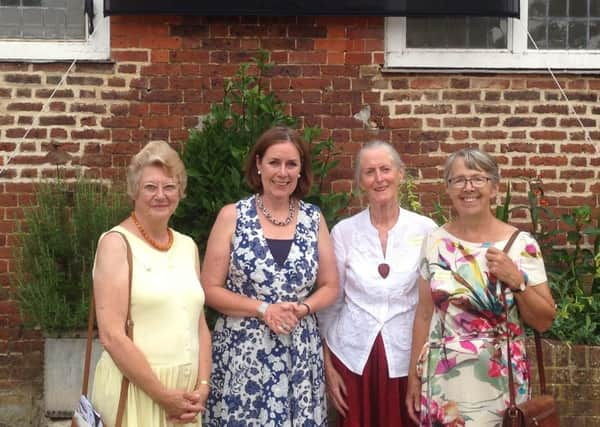Gardening experts gather at Boughton House to witness £10,000 prize handover


The event was hosted by the Finnis Scott Foundation (FSF) and saw invited guests from all the organisations that the FSF has supported since it was founded in 2008.
A spokesman for the organisers said: “The idea was that people working in the same fields – horticultural training, historic gardens, social care, community gardening, plant sciences, museums and galleries, and publications – could get together and share their knowledge and experiences.
Advertisement
Hide AdAdvertisement
Hide Ad“Boughton House belongs to the Duke of Buccleuch, KT, who joined in the celebrations, and opened the house and gardens (usually closed in July) for guided tours.
“The first Botanical Art Award was presented to a group of botanical artists who have been preparing a ‘florilegium’ of the bearded irises that were bred by Sir Cedric Morris. Morris (1889-1982) was an artist, gardener and iris breeder, based in Hadleigh in Suffolk.”
When awarding the £10,000 prize, the Chairman of the FSF Trustees, Ian Barnett, congratulated the group of artists. “The judges thought the paintings were of a very high standard and liked the scope of the project and the connection with the Sir Cedric Morris Iris collection and Gainsborough’s House.”
The paintings are to be given to Gainsborough’s House in Sudbury, Suffolk, another organisation supported by the Finnis Scott Foundation.
Advertisement
Hide AdAdvertisement
Hide AdThe FSF Botanical Art Award is the most valuable award of its kind and, in the words of the botanical artist, Sandra Wall-Armitage, who was one of the judges: “The Award is unique in that it offers the opportunity for dedicated botanical art societies and similar groups to apply for funding to develop projects they wouldn’t otherwise be able to carry out. The botanical artist often works alone so the opportunity to work in collaboration as part of a group can be incredibly inspiring.”